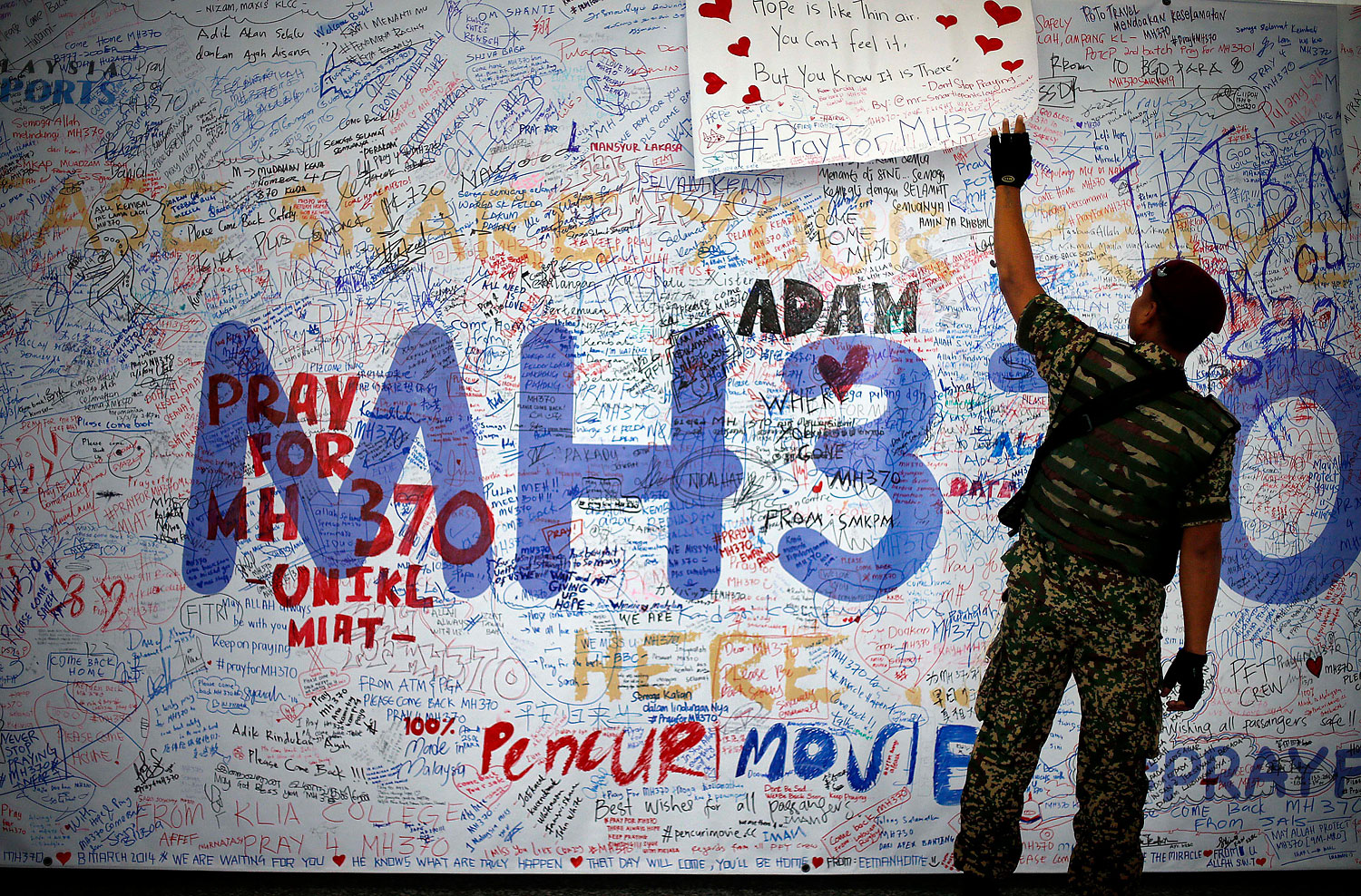
The wide-ranging search for the missing Malaysia Airlines Flight 370 has spread from the open sea to dry land, as the investigation recalibrates on the plane’s pilots and those who were aboard for clues in the flight’s mysterious disappearance.
The plane was most likely deliberately diverted by at least one person on board and flown far off its intended route from Kuala Lumpur to Beijing, Malaysian officials concluded on Saturday, and attention has turned to a criminal investigation that includes the vanished crew and passengers, even as the search of miles of ocean continues. The investigation will now involve picking apart details about each passenger and crew member’s background, and expanding a physical search for the plane that now includes a huge swath of land, after investigators found on Friday that a satellite picked up signals from the plane that would place it anywhere on a path from the mountains of Central Asia to the vast oceans west of Australia. Police are looking at the personal, political and religious backgrounds of the crew members, as well as ground staff, Reuters reports.
The number of nations involved in the search for the Boeing 777, which disappeared on March 8 with 239 people aboard, has grown from 14 to 25, and now includes Kazakhstan, Uzbekistan, Kyrgyzstan, Turkmenistan, Pakistan, Bangladesh, India, China, Burma, Laos, Vietnam, Thailand, Indonesia, Australia, France, the U.K. and the U.S., CNN reports.
U.S. officials have said the dramatic maneuvers the plane made after losing contact with ground control indicate an experienced pilot was likely at the controls, and that the plane performed “tactical aviation maneuvers” after it disappeared from radar, ABC reports. Investigators discovered that a pilot spoke to Malaysian air-traffic control after a signaling system on the jet was disabled, the New York Times reports, and did not indicate there was anything wrong with the signals system or the plane when he communicated with ground control.
Malaysian police on Saturday searched the Kuala Lumpur homes of the flight’s captain Zaharie Ahmad Shah and his first officer, Fariq Abdul Hamid, and took a flight simulator from Shah’s home to examine, the Associated Press reports. The possibility of a hijacking has not been ruled out.
The new conclusions in the investigation — that an experienced pilot is likely responsible for the flight’s disappearance, and that satellite data shows a broad possible flight route — have significantly widened the scope of the search. But officials said that it was unlikely the plane flew over Central Asia, which is studded with military and high-tech radars that could detect the plane, the Times reports. That means the plane’s more likely path was a southern corridor to the west of Australia.
More Must-Reads from TIME
- Donald Trump Is TIME's 2024 Person of the Year
- Why We Chose Trump as Person of the Year
- Is Intermittent Fasting Good or Bad for You?
- The 100 Must-Read Books of 2024
- The 20 Best Christmas TV Episodes
- Column: If Optimism Feels Ridiculous Now, Try Hope
- The Future of Climate Action Is Trade Policy
- Merle Bombardieri Is Helping People Make the Baby Decision
Contact us at letters@time.com